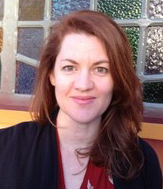BHP Foundation’s Melinda Macleod explains how indigenous-led conservation projects, like the 10 Deserts Project in Australia, can help achieve the urgent turnaround in biodiversity need this decade
‘In traditional times there were no borders like now — no states and territories, no native title borders and different groups drawing lines. This project removes those borders so that we can work together to keep country and people healthy.”
The speaker is Nyaparu Rose, a Nyangumarta Warrarn elder from Australia’s north-west, talking about why indigenous-led conservation initiatives like the one she is involved in, called the 10 Deserts Project, are fundamentally important for the long-term future of the world’s most important areas of biodiversity. The project, which is building the largest indigenous-led connected conservation network on Earth, demonstrates a new approach to achieving enduring conservation.
Globally, 2020 is considered a make-or-break year for the environment, with momentum building in response to multiple calls to action. As the United Nations notes in its 2019 progress report on the Sustainable Development Goals, “the most vulnerable people and countries continue to suffer the most. and the global response has not been ambitious enough”. Meanwhile, the World Economic Forum’s Global Risks Report 2020 noted that for the first time biodiversity loss is one of the top five threats humanity will face in the next 10 years. (See ‘The natural systems that sustain life are on the critical list’)
With 80% of the world’s land-based biodiversity located on indigenous peoples’ territories, indigenous leadership are essential
With major policy frameworks and global decisions up for discussion at the 2020 UN Biodiversity Conference and the UN Climate Change Conference in Glasgow, there is a rare opportunity and compelling urgency to set the tone of the policy agenda and help shape the future of the world’s rapidly decreasing areas of biodiversity.
One approach that we know works is indigenous-led conservation. Indigenous peoples are the most effective stewards of their lands and sea, having lived there for thousands of years, and hold a cultural and spiritual connection. With 80% of the world’s land-based biodiversity located on indigenous peoples’ territories, indigenous consent and leadership are essential, or else we risk perpetuating the colonial conservation model.
BHP Foundation’s environmental resilience programme is partnering with some of the world’s leading organisations to:
• deliver projects that are high-impact and enduring;
• engage directly with people who live in the landscapes;
• initiate projects that enhance policy frameworks and mobilise markets;
• pilot new approaches that can be replicated and scaled up; and
• support the aspirations of indigenous people to manage their traditional lands for a range of economic, social, cultural and environmental outcomes.

In Canada’s boreal forest, The Nature Conservancy and First Nations are working to transform the way natural resource decisions are made, collaborating to secure lasting conservation results for 9m hectares of boreal forest in Manitoba. The project is strengthening and supporting the voices, choices and actions of the First Nations peoples as they determine how to best manage and develop the natural resources in their territories to align with conservation and climate outcomes and cultural values. They are doing this in a variety of ways including:
• supporting the development of indigenous guardians, youth guardians and land-based education programs;
• supporting species-mapping and land use and protected area planning; and
• generating active and collaborative land management, notably around critical local issues where there hasn’t been capacity or collaboration in the past.
We’re also supporting a project in Peru that is a model for economic empowerment. Peru’s Amazon rainforest is a global biodiversity hotspot under enormous threat. In the Alto Mayo region the deforestation frontier is occurring in the mostly intact Awajun territories. Through our partnership with Conservation International, Awajun Indigenous communities will achieve long-term sustainable development by becoming active and effective stewards of the landscape’s natural resources.
By supporting traditional owners to look after and manage their country the project is building environmental resilience
Using innovative financing models, the project is supporting the delivery of an alternative, culturally appropriate and inclusive development pathway in Awajun indigenous communities, that includes conservation as a key component. What’s truly exciting about this project is that if the model is proven to be sustainable and effective, it can become a prototype for the broader Peruvian Amazon.
And then there’s the 10 Deserts Project, covering a region that spans one-third of the Australian continent. This is an area that’s rich in unique plant and animal life and home to many of Australia’s threatened animals. By supporting traditional owners to look after and manage their country the project is building environmental resilience. It will deliver a strong and effective voice for the deserts and leverage additional funding through market-enabling mechanisms and co-financing by government.
In remote areas of the Great Sandy Desert, Karajarri and Ngurrara rangers have embarked on “fire walks”, or ground-based application of right-way fire, using traditional methods.
At Oak Valley on Maralinga Tjarutja lands, an on-country activity integrating traditional burning, cultural mapping and site visitation, brought together Anangu elders, rangers and community members on their traditional lands, with a focus on the transfer of traditional knowledge from older to younger generations. Approximately 1,500 hectares of country was burnt, including a buffer from summer fires for the community and significant sites to the north west.
It’s also an explicit endorsement of indigenous Australians as the best caretakers of the desert.
By promoting Indigenous-led conservation – a model we know works – we can confidently commit to the ambitious climate and environmental goals needed in 2020, knowing they can be implemented in a socially just and effective manner and achieve the urgent turnaround we need this decade.

Melinda Macleod is program director for environmental resilience at BHP Foundation

